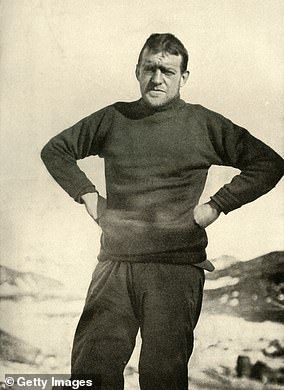Sir Ernest Shackleton’s barometer is FOUND after 102 years: Instrument that hung on the ship’s cabin wall during the explorer’s last Antarctic expedition is to be auctioned – and could fetch £8,000
If you’ve always dreamed of owning a beautiful piece of British nautical history, this is your chance – but it won’t be cheap.
A barometer owned by legendary Anglo-Irish explorer Ernest Shackleton is to be auctioned later this month and is expected to fetch £8,000.
The 4.5-inch scientific instrument measures air pressure and was mounted to the wall of Shackleton’s private cabin on the ship RYS Quest.
It was here where the explorer died in January 1922 of suspected heart failure during an expedition to Antarctica, aged just 47.
Amazingly, the barometer still works after more than 100 years.
A barometer used by famed explorer Sir Ernest Shackleton on his final expedition is to be auctioned later this month – and could fetch £8,000
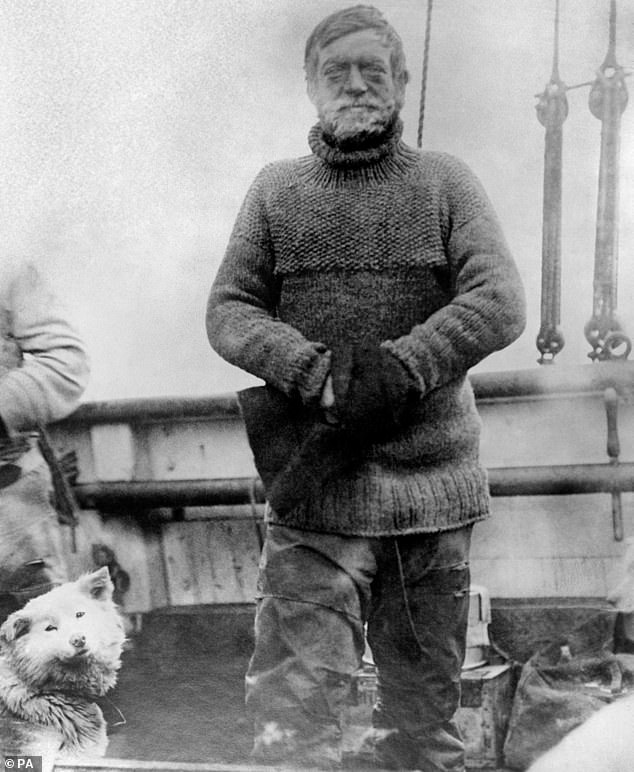
Photo of Sir Ernest Shackleton on board the ‘Quest’. The legendary Anglo-Irish explorer died in his cabin aboard the Quest while it was anchored off South Georgia. He was 47 years old
Dr. Leonard Hussey, the medic who tried to save Shackleton in his cabin, later took the barometer with him as a souvenir of him.
Dr. Hussey gave the device to a friend, someone named Major Woods, and a descendant of his has now put it up for sale.
It is being auctioned by Henry Aldridge & Son auctioneers, an auction house based in Devizes, Wiltshire.
A spokesperson told MailOnline that bidding will start at £5,000, but the expected sale price is somewhere between £5,000 and £8,000.
‘Sir Ernest Shackleton has been called “the greatest leader that ever came upon God’s earth, bar none,” said auctioneer Andrew Aldridge.
“This unique piece of memorabilia provides a tangible link not only to his final expedition, but also to the final moments of this greatest man.”
It is believed that Dr. Hussey Major Woods gave the barometer in the 1930s.
The current owner is now in his sixties and remembers the object as a boy.
But it has “literally been in a drawer for twenty years,” according to the auction house spokesperson.
The lot, which will be sold on April 27, includes a letter that Major Woods wrote when he received the object as a gift.
There is: ‘This aneroid barometer was taken to Antarctica during the Shackleton-Rowett Antarctic Expedition 1921-1922 and was destroyed in the cabin of Sir Ernest Shackleton on RYS Quest, given to me by Dr. LDA Hussey.’
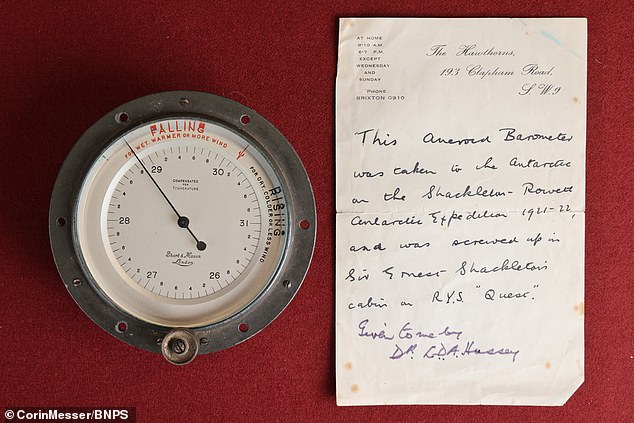
The barometer is accompanied by a letter stating: ‘This aneroid barometer was taken to Antarctica during the Shackleton-Rowett Antarctic Expedition 1921-1922 and was destroyed in Sir Ernest Shackleton’s cabin on RYS Quest, given to me by Dr. LDA Hussey’
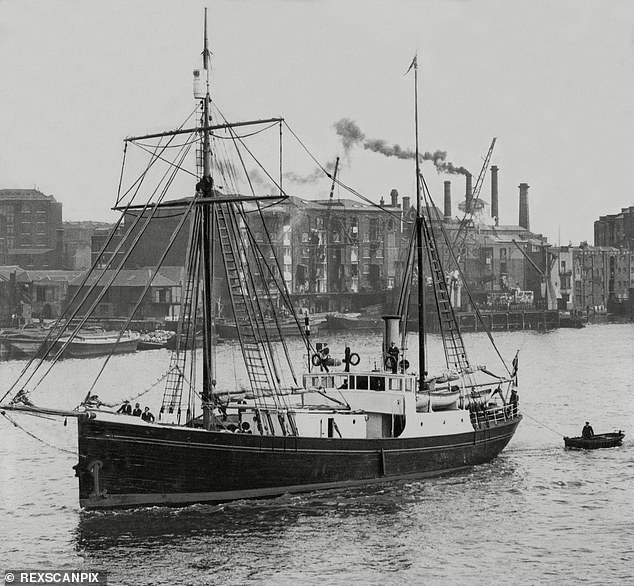
The ship Quest used on the Ernest Shackleton expedition to Antarctica arriving from Southampton at St Katharine’s Dock, prior to the voyage, 1921
The barometer was manufactured by Short and Mason, an equipment manufacturer founded in London in 1864.
It was mounted to the wall of Shackleton’s private cabin on the ship RYS Quest during an expedition to Antarctica in December 1921.
Shackleton led the Quest expedition to circumnavigate the Antarctic continent six years after his legendary ship the Endurance sank.
Just before Quest left Rio de Janeiro for the sub-Antarctic island of South Georgia, Shackleton suffered a suspected heart attack but declared himself better the next morning.
However, during the two-week journey, Shackleton was seen drinking heavily to ease the pain he was in, namely with champagne.
Dr. Alexander Macklin, who was on watch on the evening of January 5, 1922, had visited Shackleton in his cabin.
After encouraging Shackleton to take it easy, Macklin was reprimanded, saying: …’You always want me to give up something. What do you want me to give up now?’
Macklin responded, “Mostly alcohol, boss, I don’t think you’ll agree.”
Shortly afterwards, Shackleton suffered a very severe exacerbation of symptoms, resulting in his death shortly after arriving in South Georgia.
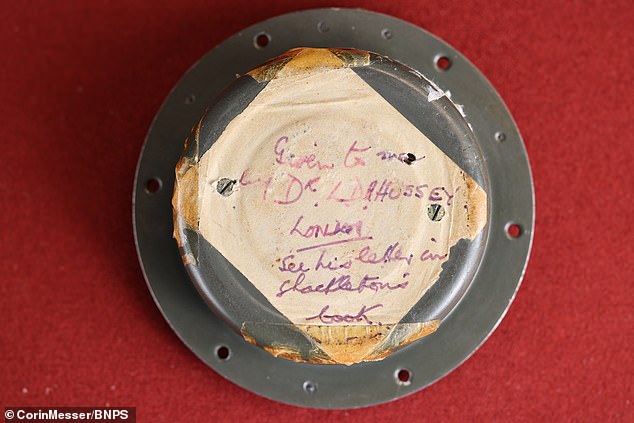
The back of the barometer reads: ‘Given to me by Dr. LD R Hussey LONDON See his letter in Shackleton’s book’
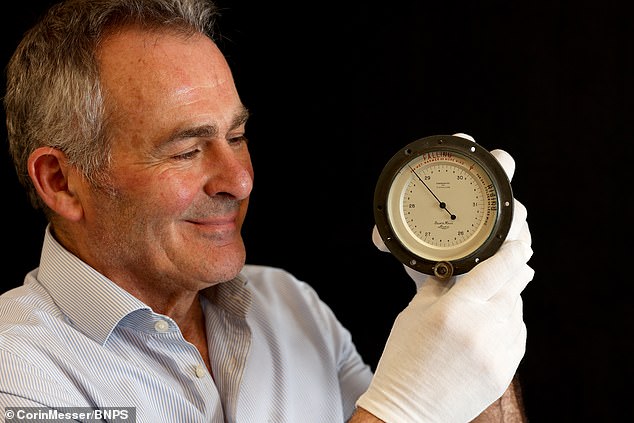
The scientific instrument was mounted on the wall of Shackleton’s private cabin on the ship RYS Quest. It was the ship on which the great British hero died of suspected heart failure while in South Georgia harbour. Pictured is British antiques dealer Paul Martin with the device
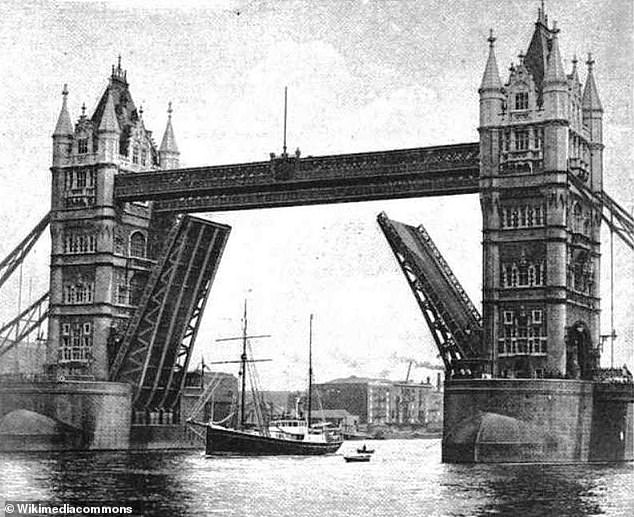
Quest passes Tower Bridge, London. Shackleton died aboard the ship when it reached the sub-Antarctic island of South Georgia
Dr. Hussey, who was also the expedition’s meteorologist and assistant surgeon, later wrote in a letter: ‘It was a terrible blow to us, even though in our medical work we have seen countless people die at our hands, but somehow his was different.
“I tried to inject some ether to stimulate his heart, but within three minutes he was dead.”
Dr. Hussey, who had previously served with Shackleton on the Endurance expedition, accompanied his body to Uruguay, where he telegraphed England with news of the explorer’s death.
Shackleton’s widow replied that he should be buried in South Georgia and Hussey carried out her instructions.
Shackleton was buried on March 5 with Dr. Hussey, the only one of his former comrades present.
Although attempts by the remaining crew members continued to reach Antarctica, heavy ice packs made this impossible.
Instead, Quest returned in May 1922 and sailed to Cape Town as part of a plan to refit and resupply the ship for a second attempt the following year – an attempt that never happened.

